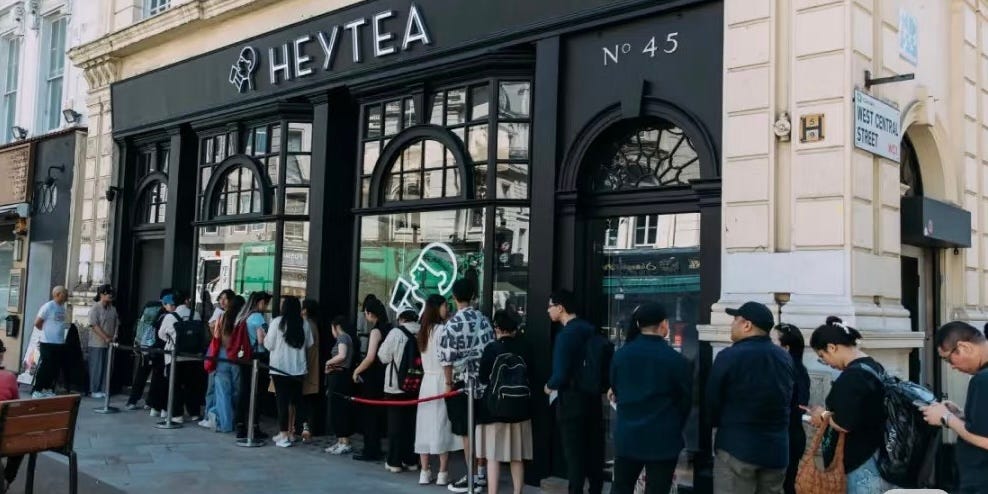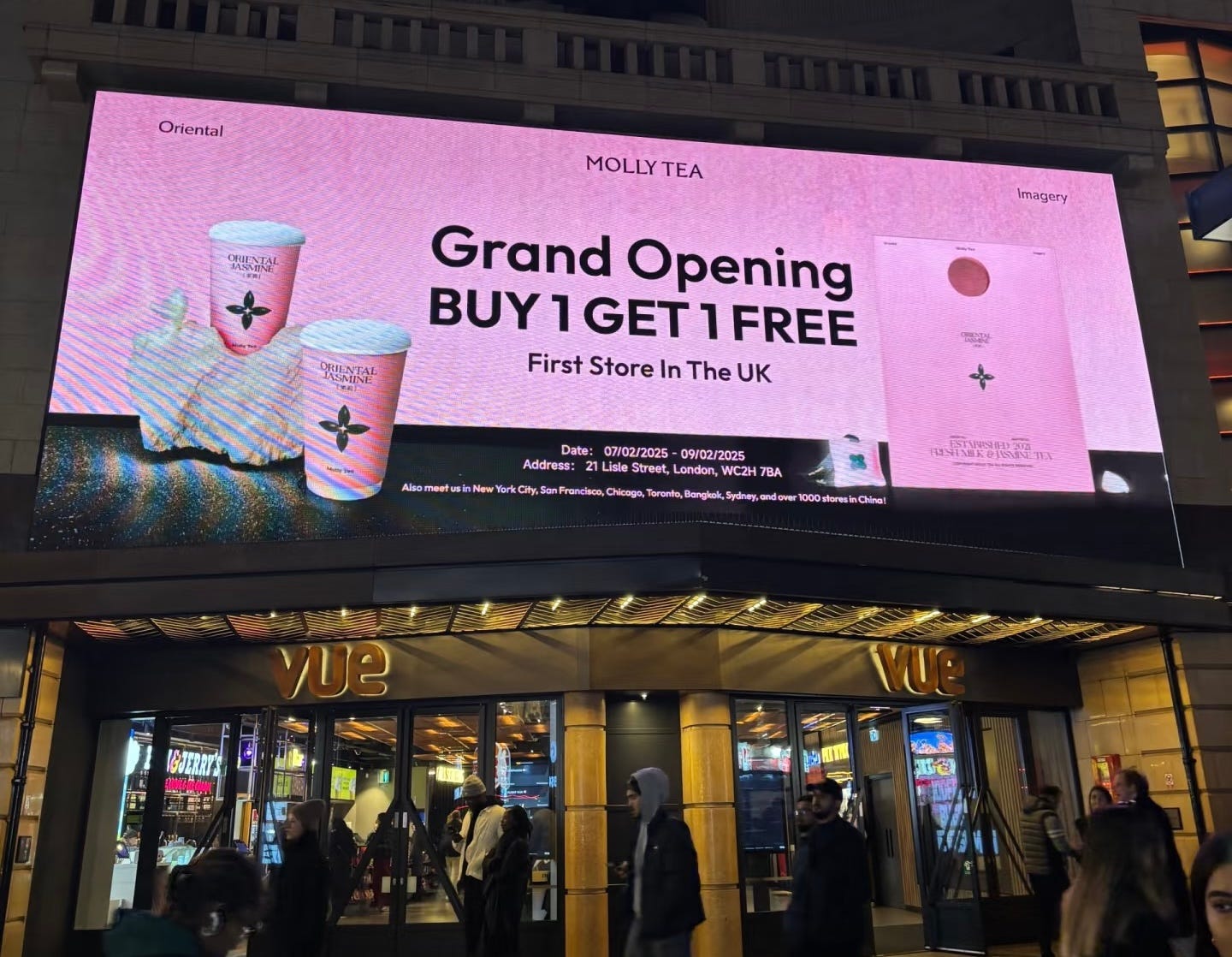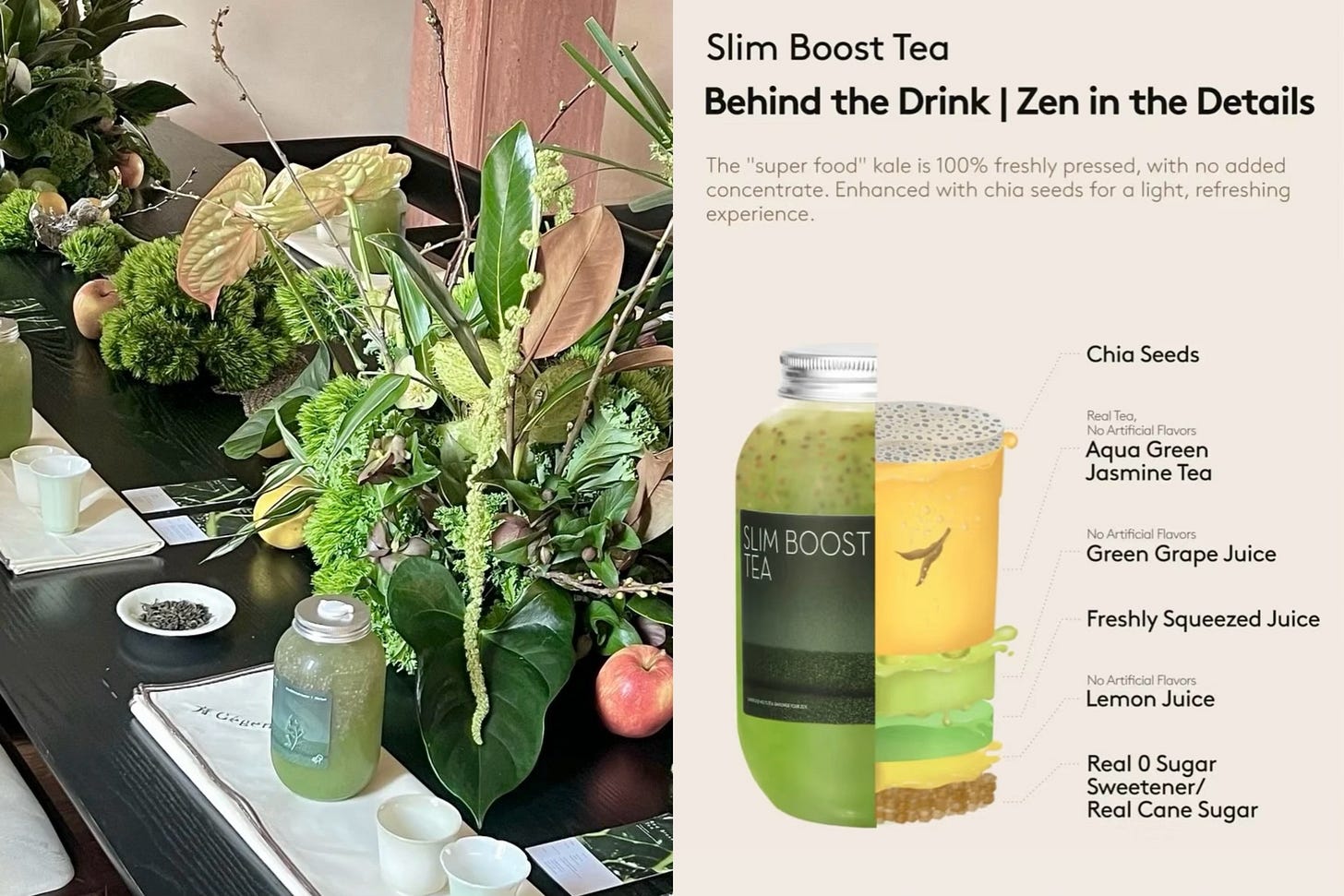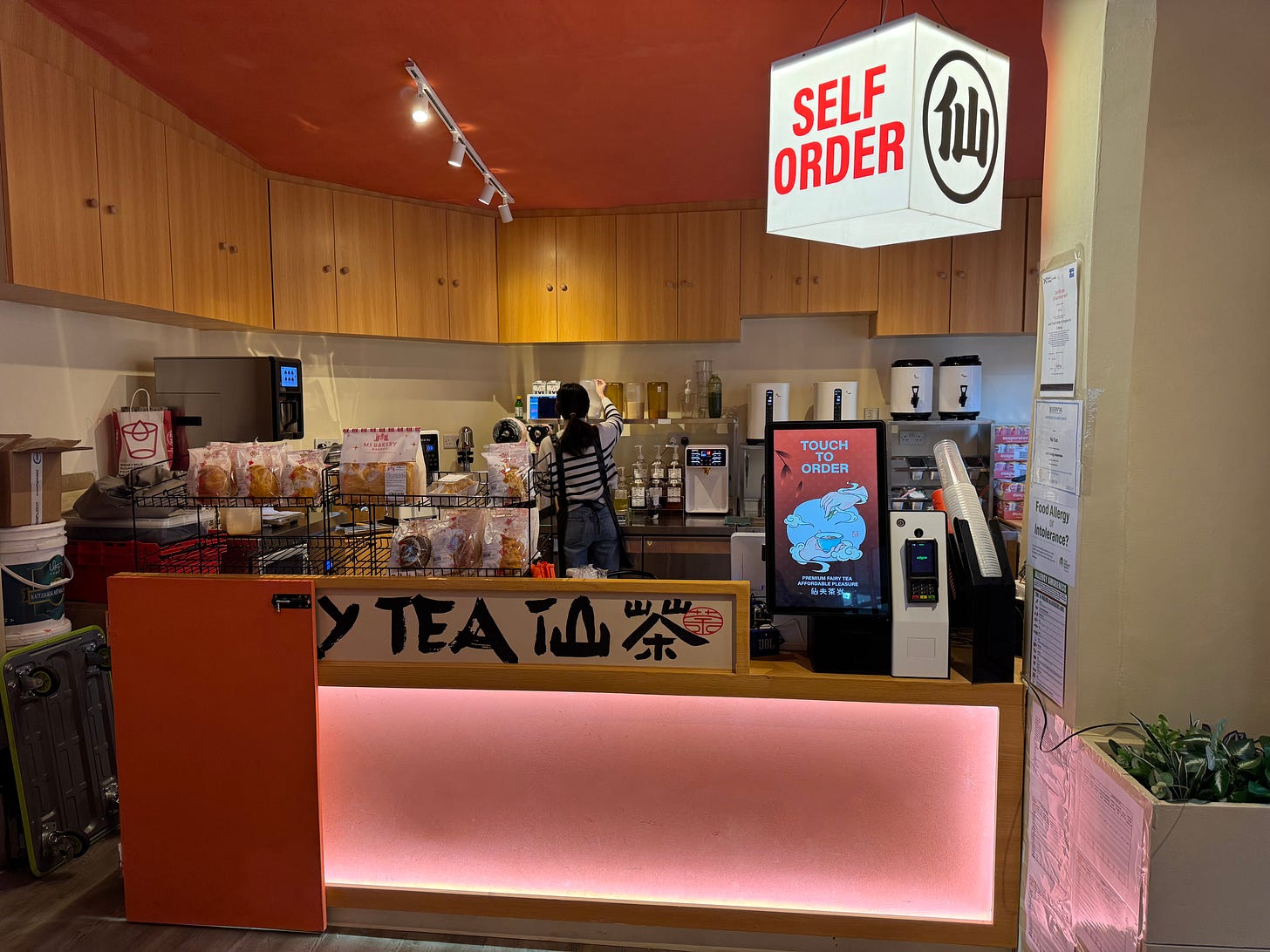Franchise, Flavour, and Footfall: How Bubble Tea Became Big Business in the UK
With smart social marketing and cultural branding, Chinese bubble tea chains are finding their flavour—and footing—in Britain’s drinks market.
This was an afternoon on a working day in London. At the entrance of a bubble tea shop named HEYTEA, the queue of waiting customers had extended onto the sidewalk. Customers had placed their orders through their phones and were chatting with each other while waiting for their drinks - they might have had matcha oat milk with pudding, mango fruit tea with coconut balls, or the classic black sugar bubble tea. Inside the shop, the air was filled with the aroma of various brewed tea bases, and various bubble tea toppings were waiting to be added to the customers' drinks.
Bubble tea was once regarded as an uncommon imported beverage. However, nowadays it has become one of the preferred drinks in the UK – especially among the Z-generation consumers, who consider it as a fashionable and flavorful coffee alternative. For many people, it is not merely a drink! It is a kind of life ritual, a social signal, and one of the main elements that can be uploaded to TikTok for display.
As a bubble tea shop owner who opened a new store named Fairy Tea in Oxford just last year said, "The student community in Oxford brings a steady stream of foot traffic to the store throughout the day. We will not only strive to position our products as a trend that is chased for a short time, but our ultimate goal is to make it a part of people's daily lifestyle."
Queuing crowd outside a Heytea store in London
But what’s really driving this growth, and how are brands adapting as they expand across the UK?
From Niche to Mainstream – Market Positioning & Strategy
The success of bubble tea in the UK is not accidental. It is the result of the joint effect of a profound tea culture background and flexible business strategies. Unlike traditional coffee shops or restaurants that require a complete set of kitchen utensils and professional machines, the bubble tea brand adopts a more streamlined business model. A small store with only a few employees can supply hundreds of cups of beverages every day thanks to its efficient workflow and flexible layout. It is reported that on February 7th of this year, the sales of the bubble tea shop named Molly Tea on its opening day in London exceeded 1.1 pounds.
Billboard of Molly Tea before its opening in London
But entering the UK market hasn’t been without challenges. According to the interview with Emily, a business scholar dedicated to promoting East Asian culture in Europe, the operational environment in the UK differs significantly from that in China. “In China, costs for ingredients, labour, and rent are comparatively low. Here, high operating costs require brands to strike a careful balance between affordability and profitability.”
Price perception also plays a crucial role. As British consumers are accustomed to spending 4 to 5 pounds on beverages at Starbucks or Costa Coffee, the bubble tea brand has to compete not only on taste but also on the perceived value and consumption experience for consumers. For many people, the original flavor of the product and the various optional ingredients are among the reasons why they turn away from coffee shops and head to bubble tea shops.
As the Oxford Fairy Tea shop owner shared, “We import our tea leaves and ingredients directly from China. Customers appreciate the authenticity—it sets us apart from other milk tea.”
Taste as Driver – Product Adaptation in a Global Market
To succeed in the UK market, it is not as simple as just moving the Chinese bubble tea shop intact into the UK. Instead, a whole set of service systems needs to be adjusted accordingly according to customers' needs. For bubble tea brands, this means that they have to rethink not only the taste but also the selection of raw materials, sweetness, and even the choice of milk.
"British customers prefer custom-made drinks," said Fairy Tea's owner. "Non-Asian customers often ask for oat milk and sweeteners. Here, people pay much more attention to sugar content and allergens than in China."
This transformation is reflected in how brands adapt their products globally. For example, Heytea has recently introduced a series of kale-based drinks in some of its international stores. The goal is to maintain the signature characteristics of bubble tea while making it accessible to new consumer groups. The strategy is clear: meet the market halfway without losing identity.
Exhibition and introduction of Heytea's kale - series products.
Emily commented, “Taste preference becomes a brand’s market strategy. Gen Z in the UK is highly experimental, so innovation is key. But brands still need to honour their origins to retain authenticity.”
Marketing in the Digital Era – Social Media & Community
In the current market, no bubble tea brand can afford to ignore the power of digital platforms. From taste reviews on TikTok to eye-catching cup designs on Instagram, social media has become a new battlefield for attracting attention and cultivating customer loyalty.
“Short video marketing and KOL collaboration are much more cost-effective than traditional advertising,” said the Emily interviewed. “And for Gen Z, who value authenticity and peer recommendations, user-generated content can drive real engagement.”
The Fairy Tea's owner agrees. “We work with local content creators on TikTok and Instagram. They help showcase the drinks and the space of the shop. It’s not just advertising—it’s a conversation.”
The interior of Fairy Tea shop in Oxford
One of the creators is Zynn, the founder of the "UK Bubble Tea" account on Xiaohongshu. She has been documenting Asian food and bubble tea in the UK since 2022, and now the account has received 150,000 likes. "At first, it was just a project out of personal interest," she said. "But I was amazed by how many people paid attention to and liked it."
Zynn said, "Now people customize bubble tea in the same way they customize coffee. Bubble tea is gradually forming its own trendy circle, and I am really into this trend."
At the same time, based on her experience, she introduced that hashtags like #BubbleTeaUK and #LondonBoba is helpful for new bubble tea shops to be discovered. For various brands, having a presence on digital platforms means much more than just increasing visibility, it is also a way to shape the brand image.
Looking Ahead – Milk Tea as a Cultural Bridge
As bubble tea continues to gain popularity, its future in the UK looks increasingly promising—not just as a drink, but as a cultural symbol. But for brands, the real challenge now is sustaining that momentum and scaling it with intention.
Just this month, bubble tea Gong Cha announced an ambitious expansion plan in the UK. According to the March 17, 2025 News, the company has signed a major franchise deal with Jinziex, aiming to open at least 225 new stores across the UK in the coming years. The expansion is part of Gong Cha’s global vision to reach 10,000 outlets by 2032, and is expected to create nearly 2,000 new jobs in the UK alone.
With global players like Gong Cha and Heytea steadily expanding across Europe, the bubble tea boom is entering a new phase. If done right, bubble tea could become not just a fleeting craze, but a permanent and flavourful chapter in Britain’s beverage culture.





